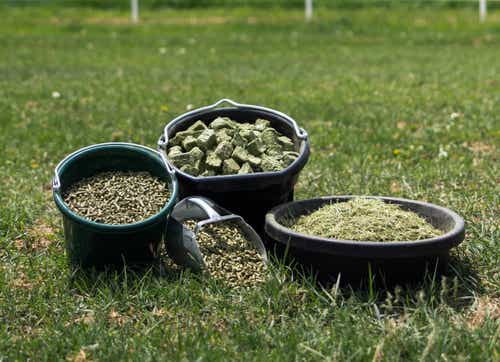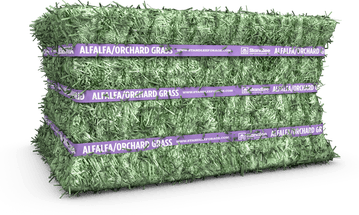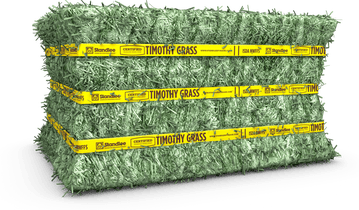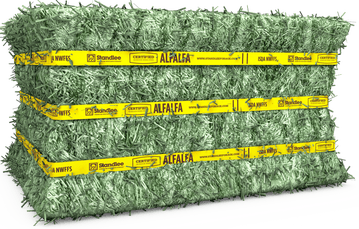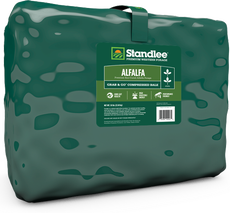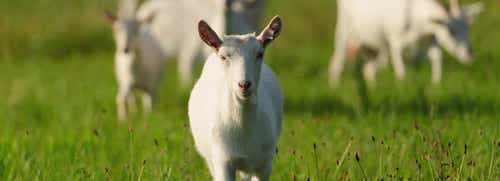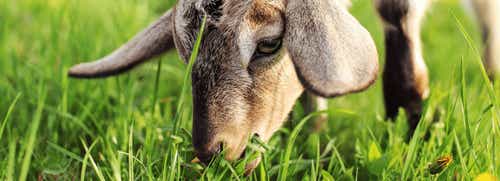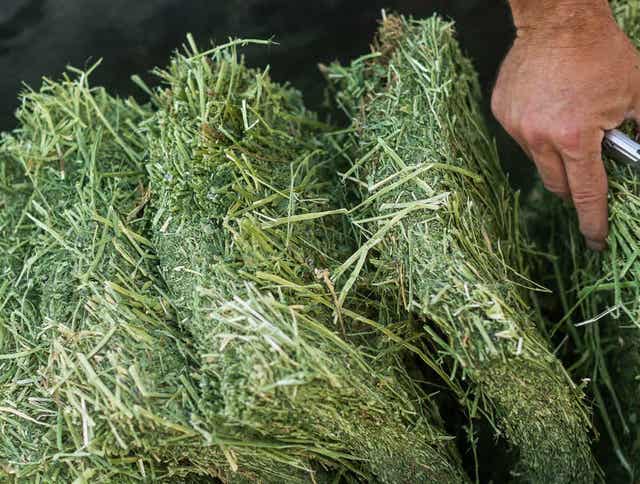
4 Signs of Good Quality Horse Forage
The quality of hay we offer our horses can have profound health consequences. If we feed dusty, moldy, or insect-infested forage, we risk predisposing our horses to respiratory issues, digestive upset (colic), and even death. Further, if we feed forage with poor nutrient content, our horses can suffer from weight loss or nutrient deficiency, often expressed as poor immune response, hoof quality, and hair coat.
To keep our horses healthy, we need to provide good-quality forage. So, what is a "good" quality forage, and how is forage quality determined? The following will provide a basis to judge forage quality.
Visual Analysis Forage Quality
We can learn a significant amount about forage quality by physically inspecting the forage. Several parameters can be utilized to get a general idea of forage quality. These parameters include the color of forage, smell/odor, length of seed head (plant maturity), and leaf-to-stem ratio.
- Color: The first physical parameter to evaluate in forage is the green color. Brown or yellow forages indicate bleaching or loss of color due to exposure to sunlight or harsh weather. This bleaching results in a loss of critical vitamin content; brown or yellow hay is typically inferior to the same type of hay that is green in color.
- Smell: The next parameter to evaluate in forage is odor or smell. Good quality forage should smell fresh and clean. It should not smell of mildew, dust, or mold. Dust and mold can cause respiratory issues in horses. In addition, some mold produces toxins that can be toxic to horses.
- Leaf-to-Stem Ratio: With alfalfa plants, we can judge quality by looking at the leaf-to-stem ratio; By plucking a stem from a bale, you can determine how many leaves are attached. The more leaves, the higher the quality.
- Plant Maturity: Physically inspecting the length of the seed head in grass hay or the length of the blades of grass provides information on the stage of maturity. As judged by the length of the seed head and longer blades, the taller, a plant becomes, the more mature that forage is. As forage matures, it becomes less digestible and of lower quality. Once a plant is past the normal height of a hay field, the digestibility and quality of that forage will decline.
Chemical Analysis Forage Quality
The "gold standard" method of determining forage quality is to take a representative sample of the forage and submit it to a forage laboratory for chemical analysis. A laboratory takes the subjective nature out of determining forage quality. Forage laboratories will provide helpful information about the forage, including moisture content, energy (calories), protein, sugar/starch, and minerals. Some forage laboratories will also provide vitamin analysis and screen for harmful molds or toxins in the forage.
The chemical analysis will provide a nutrient profile for the forage to match the individual nutrient needs of the horses. For example, suppose you have a young, growing horse. In that case, a higher protein content in the forage is a benefit, or if you have a sugar-sensitive horse, a forage with an analyzed sugar/starch content will help you determine if the forage is suitable. The cost of a chemical forage analysis varies from laboratory to laboratory, but most will charge $30 to $150, depending on the nutrients you want analyzed in the forage.
The forage quality can initially be determined by passing the visual test and looks satisfactory for your horse. If additional tests are needed, a chemical analysis can be completed.
The benefit of feeding Standlee products is that chemical analysis has been completed; and is printed on the bags in the form of our guaranteed analysis. Learn more about the secret to growing high-quality forage in Episode 33 of Standlee’s Beyond the Barn® podcast with guest Jason Stanger, Standlee Vice President of Ag Resources.
By Dr. Tania Cubitt & Dr. Stephen Duren
Standlee Nutritional Experts - Performance Horse Nutrition


